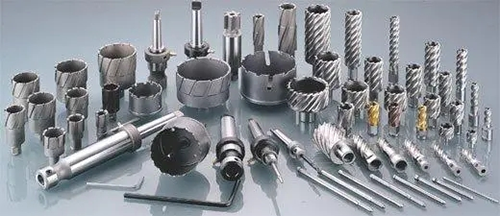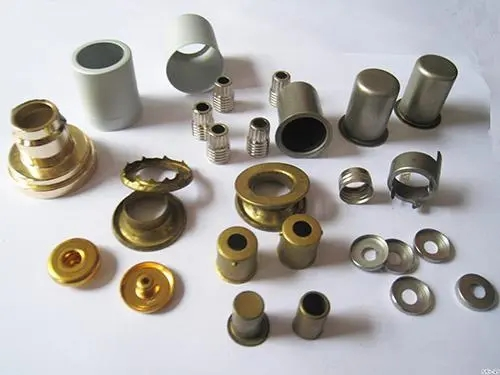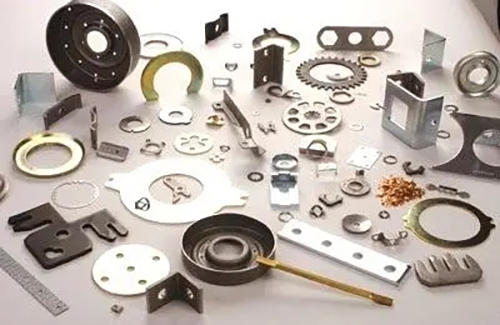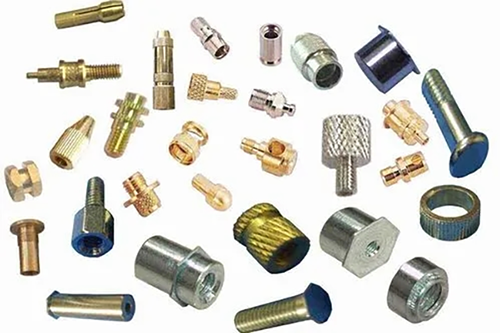
Inspection methods for stamped parts
Wipe the surface of the outer cover with clean gauze. The inspector needs to wear touch gloves to touch the surface of the stamped part longitudinally, and this inspection method depends on the inspector's experience. When necessary, suspicious areas that have been detected can be polished with an oilstone and verified, but this method is an effective and fast inspection method.
2. Oil stone polishing
① Firstly, clean the surface of the outer cover with a clean gauze, and then polish it with an oilstone (20 × 20 × 100mm or larger). For areas with arcs and difficult to reach areas, use relatively small oilstones (such as an 8 × 100mm semi-circular oilstone).
② The selection of oilstone particle size depends on the surface condition (such as roughness, galvanizing, etc.). It is recommended to use fine-grained oilstones. The direction of oil stone polishing is basically carried out along the longitudinal direction, and it fits well with the surface of the stamped part. In some special areas, horizontal polishing can also be added.

3. Polishing of flexible yarn mesh
Wipe the surface of the outer cover with clean gauze. Use a flexible sanding net to closely adhere to the surface of the stamped part and polish it longitudinally to the entire surface. Any pitting or indentation will be easily detected.
4. Oil coating inspection
Wipe the surface of the outer cover with clean gauze. Apply oil evenly along the same direction with a clean brush to the entire outer surface of the stamped part. Place the oiled stamped parts under strong light for inspection. It is recommended to place the stamped parts vertically on the vehicle body. By using this method, it is easy to detect small pits, indentations, and ripples on stamped parts.
Visual inspection is mainly used to detect the appearance abnormalities and macroscopic defects of stamped parts.
Put the stamped parts into the inspection tool and inspect them according to the operation requirements of the inspection tool manual.
Evaluation criteria for defects in stamped parts
1. Cracking
Inspection method: visual inspection
Evaluation criteria:
A-type defect: Cracking that can be noticed by untrained users. Stamped parts with such defects are unacceptable to users and must be frozen immediately upon discovery.
B-type defect: visible and determinable minor cracks. This type of defect is unacceptable for stamped parts in areas I and II, and welding and repair are allowed in other areas. However, the repaired parts are difficult for customers to detect and must meet the repair standards for stamped parts.
Class C defect: a defect that is ambiguous and determined after careful inspection. Stamped parts with this type of defect are repaired by welding within Zone II, Zone III, and Zone IV, but the repaired parts are difficult for customers to detect and must meet the repair standards for stamped parts.
2. Strain, coarse grain size, and dark damage
Inspection method: visual inspection
Evaluation criteria:
Class A defects: strains, coarse grains, and hidden injuries that can be noticed by untrained users. Stamped parts with such defects are unacceptable to users and must be frozen immediately upon discovery.
B-type defects: visible and determinable minor strains, coarse grains, and dark marks. Stamped parts with such defects are acceptable in Zone IV.
C-type defects: slight tensile damage, coarse grain size, and hidden damage. Stamped parts with such defects are acceptable in zones III and IV.
3. Deflated pond
Inspection method: visual inspection, oilstone polishing, touching, and oiling
Evaluation criteria:
A-type defect: It is a defect that users cannot accept, and untrained users can also notice it. After discovering this type of dent, the stamped parts must be immediately frozen. A-type dent stamped parts are not allowed to exist in any area.
B-type defect: It is an unpleasant defect that is a tangible and visible indentation on the outer surface of the stamped part. Such indentation is not allowed on the outer surface of Zone I and II of the stamped part.
Class C defect: It is a defect that needs to be corrected, and most of these dimples are in ambiguous situations that can only be seen after polishing with oilstones. Stamped parts of this type of sink are acceptable.

4. Waves
Inspection method: visual inspection, oilstone polishing, touching, and oiling
Evaluation criteria:
Class A defect: This type of wave can be noticed by untrained users in areas I and II of stamped parts, and cannot be received by users. Once discovered, the stamped parts must be immediately frozen.
B-type defect: This type of wave is an unpleasant defect that can be felt and seen in areas I and II of stamped parts and requires repair.
Class C defect: It is a defect that needs to be corrected, and most of these waves are in an ambiguous situation, which can only be seen after polishing with oilstones. Stamped parts with such waves are acceptable.
5. Uneven and insufficient flipping and cutting edges
Inspection method: visual inspection and touch
Evaluation criteria:
Class A defect: Any unevenness or shortage of flipped or cut edges on the inner and outer covering parts, which affects the quality of undercutting and welding overlap unevenness or shortage, and thus affects the welding quality, is unacceptable. Upon discovery, the stamped parts must be immediately frozen.
B-type defect: visible and determinable unevenness and shortage of flipped and cut edges that have no impact on undercutting, welding overlap, and welding quality. Stamped parts with such defects are acceptable within Zone II, III and IV.
Class C defects: Slight unevenness and shortage of flipping and cutting edges have no impact on the quality of undercutting and overlapping welding. Stamped parts with such defects are acceptable.
6. Burrs: (trimming, punching)
Inspection method: visual inspection
Evaluation criteria:
Class A defect: Severe impact on the degree of welding overlap, punching holes for positioning and assembly of stamped parts, and coarse burrs that are prone to personal injury. Stamped parts with this defect are not allowed to exist and must be repaired.
B-type defect: Medium burrs that have a slight impact on the degree of welding overlap and the punching of stamped parts for positioning and assembly. The stamped parts with this defect are not allowed to exist in zones I and II.
Class C defect: Small burrs, which are allowed to exist in stamped parts without affecting the overall quality of the vehicle.
7. Bruising and scratching
Inspection method: visual inspection
Evaluation criteria:
Class A defects: serious impact on surface quality, potential burrs and scratches that can cause tearing of stamped parts. Stamped parts with such defects are not allowed to exist.
B-type defect: visible and identifiable burrs and scratches, and stamping parts with such defects are allowed to exist in Zone IV.
Class C defects: Minor defects may cause burrs and scratches on stamped parts, and stamped parts with such defects are allowed to exist in zones III and IV.
8. Rebound
Inspection method: Place it on the inspection tool for inspection
Evaluation criteria:
A-type defect: A type of defect that causes significant size matching and welding deformation in stamped parts, and is not allowed to exist in stamped parts.
B-type defect: springback with significant size deviation that affects the size matching and welding deformation between stamped parts. This type of defect is allowed to exist in zones III and IV of stamped parts.
Class C defect: springback with small size deviation, which has a slight impact on the size matching and welding deformation between stamped parts. This type of defect is allowed to exist in zones I, II, III, and IV of stamped parts.
9. Leakage punching hole
Inspection method: Visually inspect and mark with a water-soluble marker pen for counting.
Evaluation criteria: Any hole leakage on the stamped part will affect the positioning and assembly of the stamped part, which is unacceptable.

10. Wrinkling
Inspection method: visual inspection
Evaluation criteria:
Class A defect: Severe wrinkling caused by material overlap, and this defect is not allowed in stamped parts.
B-type defects: visible and palpable wrinkles, which are acceptable in Zone IV.
Class C defect: Slight and less obvious wrinkling. Stamped parts with such defects are acceptable in areas II, III, and IV.
11. Nuggets, Nuggets, Indentations
Inspection method: visual inspection, oilstone polishing, touching, and oiling
Evaluation criteria:
Class A defect: Concentrated pitting, with pitting distributed over 2/3 of the entire area. Once such defects are found in zones I and II, the stamped parts must be immediately frozen.
B-type defect: visible and palpable pitting. Such defects are not allowed to appear in zones I and II.
Class C defect: After polishing, individual distribution of pits can be seen, and in Zone I, the distance between the pits is required to be 300mm or greater. Stamped parts with such defects are acceptable.
12. Polishing defects, polishing marks
Inspection method: visual inspection and oilstone polishing
Evaluation criteria:
Class A defect: Polished through, clearly visible on the outer surface, immediately visible to all customers. After discovering such stamping marks, the stamped parts must be immediately frozen
B-type defects: visible, palpable, and can be proven after polishing in disputed areas. These types of defects are acceptable in zones III and IV. C-type defect: After polishing with an oilstone, it can be seen that stamping parts with such defects are acceptable.
13. Material defects
Inspection method: visual inspection
Evaluation criteria:
Class A defects: Material strength does not meet the requirements, leaving traces, overlaps, orange peel, stripes on the rolled steel plate, loose galvanized surface, and peeling of the galvanized layer. After the discovery of such stamping marks, the stamped parts must be immediately frozen.
B-type defects: Material defects left by rolled steel plates, such as obvious marks, overlaps, orange peel, stripes, loose galvanized surface, and peeling of galvanized layer, are acceptable in Zone IV.
Class C defects: Material defects such as marks, overlap, orange peel, stripes, loose galvanized surface, and peeling of galvanized layer left by the rolled steel plate are acceptable in areas III and IV.
14. Oil pattern
Inspection method: visual inspection and oilstone polishing
Evaluation criteria: No obvious marks are allowed in zones I and II after being polished with oil stones.
15. Convexity and depression
Inspection method: visual inspection, touch, oilstone polishing
Evaluation criteria:
A-type defect: It is a defect that users cannot accept, and untrained users can also notice it. After discovering A-type protrusions and indentations, the stamped parts must be immediately frozen.
B-type defect: It is an unpleasant defect that is a tangible and visible convex or concave point on the outer surface of a stamped part. This type of defect is acceptable in Zone IV.
Class C defect: It is a defect that needs to be corrected, and most of these protrusions and depressions are in ambiguous situations, which can only be seen after polishing with oilstones. Such defects in zones II, III, and IV are acceptable.
16. Rust
Inspection method: visual inspection
Evaluation criteria: Stamped parts are not allowed to have any degree of rust.
17. Stamping printing
Inspection method: visual inspection
Evaluation criteria:
A-type defect: It is a stamping mark that cannot be accepted by users and can be noticed by untrained users. Once such stamping marks are discovered, the stamped parts must be immediately frozen.
B-type defect: It is an unpleasant and identifiable stamping mark that can be touched and seen on the outer surface of the stamped part. Such defects are not allowed to exist in zones I and II, and are acceptable in zones III and IV as long as they do not affect the overall quality of the vehicle.
Class C defect: Stamping marks that require polishing with an oilstone to determine. Stamped parts with such defects are acceptable without affecting the overall quality of the vehicle.
Post time: Apr-16-2024





